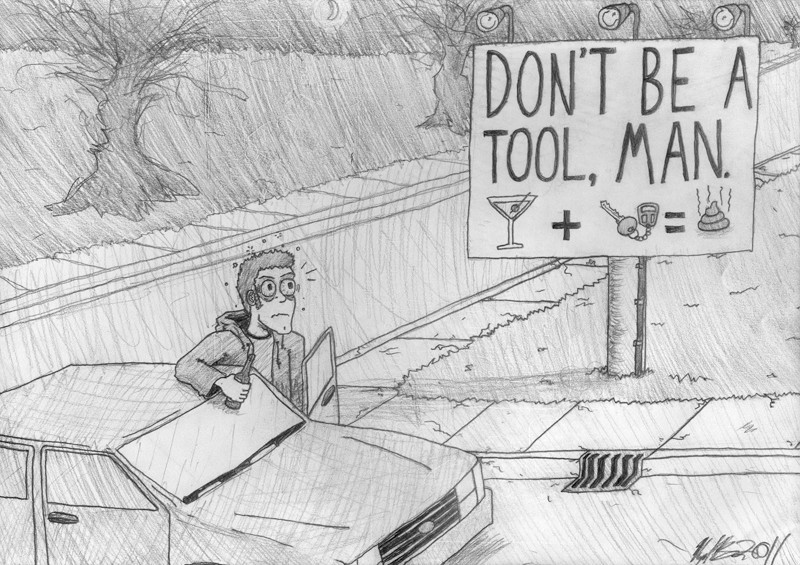The total answer?
Drunk driving campaigns can be an effective stimulant
Every drunk driving story in the media wrenches our hearts and angers us more than the last. Too often it seems the victims are young and promising - and their lives are cut short because of one individual’s carelessness.
According to the Road Safety Monitor 2010 put out by the Traffic Injury Research Foundation (TIRF), in 2008 there were 790 Canadians who died in a vehicular accident in which a driver who had been drinking was involved.
Mothers Against Drunk Driving (MADD) Canada puts that number higher at 1,162 deaths for the same year.
However, this is a decrease from 2006 in which the number was 907, and this is a massive decrease compared to 1995 when 1,296 Canadians were killed in drunk driving accidents, according to the TIRF numbers.
The number of deaths seems to be dropping, but are people really getting the message?
The prevention of drunk driving is an effort that needs to be addressed at all angles, not just one. Drunk driving campaigns featuring scheduled events, road side re-enactments and gruesome TV advertisements are part of getting the message across.
These are all important aspects of promoting awareness, and I believe they do help in changing some people’s attitudes toward getting in a car after drinking.
But there are other approaches to be taken, particularly when dealing with young people and drunk driving.
Like what about showing the consequences? I sure didn’t think about consequences when I was a teenager. Teens have seen the ads with horrific dramatized car wrecks, but do they know the legal consequences of drinking and driving?
It’s easy for a 17-year-old to hear about someone being killed in a drunk driving accident and say, “That will never happen to me.” When you’re 17 years old, you think you’ll last forever.
But show that same teenager the legal consequences that await them if they’re picked up on a DUI or involved in an accident while under the influence.
Even though the legal punishment for drinking and driving may not be as extreme as losing your life, for a younger person the thought of getting pulled over by the cops and being slapped with a huge fine, licence suspension and possible jail time may seem more realistic.
Clearly action of some kind is called for.
Despite a decrease in the number of vehicle deaths from a drinking driver, the number of drivers who admitted to getting behind the wheel after having a drink has increased.
According to the stats from the Road Safety Monitor 2010, 24.7 per cent of Canadians who took the survey admitted to driving after drinking within the last 30 days.
This is an increase from 2005, when 14.7 per cent of Canadians admitted to driving after having a drink.
Although this survey does take into account drivers who were below the legal alcohol limit, it shows that people are still making the choice to operate their vehicle after consuming alcohol.
Reducing the prevalence of drunk drivers should be on everyone’s agenda. Whether it’s looking out for your friend who’s had too much, talking to your kids about it, getting involved in a campaign or being the designated driver, it all plays a role in drunk driving prevention.
Campaigns aren’t the full answer, but they are definitely a part of it. Raising awareness and educating people on the issues is never a wrong move.
Want to read more from Dallas Kitchen? Visit www.dallaskitchen.ca.
Published in Volume 66, Number 8 of The Uniter (October 19, 2011)







